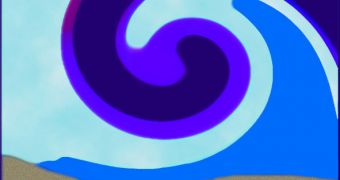The village of Aneyoshi, in Japan, was spared the wrath of the tsunami that hit the country on March 11 because its inhabitants listened to the warnings set in stone by their ancestors – a large rock telling people not to build their homes below that point.
Warnings such as this one are not at all rare in Japan. It is estimated that hundreds of them dot the country's coastlines, especially in areas that are historically prone to being heavily damaged by tsunami waves. However, some chose to ignore the ancient warnings.
Experts say that a number of these stones are more than 600 years old, which means that people who lived in these areas at the time were perfectly aware of the dangers they would have exposed themselves to, had they built their homes below a certain point.
This was made obvious for the people living in Aneyoshi. After the March 11, magnitude 9.0 tremor that hit off the northeastern coast of Japan, a massive tsunami swept the shorelines, causing fatalities and damages. But the wave stopped 300 feet (less than 90 meters) below the stone.
Our ancestors “knew the horrors of tsunamis, so they erected that stone to warn us,” explains the leader of the village, 64-year-old Tamishige Kimura. He believes that most of the recent damage could have been avoided if people have heeded the warning set forth by other stone.
However, he believes, modern-day Japan places too much value on modern structures such as tsunami gates and thick, concrete sea walls. These defenses were easily overrun by the massive tsunami.
“The tsunami stones are warnings across generations, telling descendants to avoid the same suffering of their ancestors. Some places heeded these lessons of the past, but many didn’t,” adds Ritsumeikan University natural disasters historian Itoko Kitahara.
Interestingly, most of the warning stones are located precisely in the areas most affected by this year's massive earthquake, the fifth most intense in recorded history. The seismic event and the subsequent tsunami, made 29,000 victims, people who are either dead or missing.
“As time passes, people inevitably forget, until another tsunami comes that kills 10,000 more people,” argues amateur historian Fumio Yamashita, the author of about 10 books on the power of these devastating waves.
During the economic boom that followed World War II, coastal communities that had at first heeded the warnings and built their houses on hillsides began disregarding the stone, and moved to the shoreline.
This is one of the reasons why the death and material damage toll was so high following this year's earthquake. Similar damage was recorded following the 1995 tremor that hit the Kobe area.
This story was first published by The New York Times.

 14 DAY TRIAL //
14 DAY TRIAL //